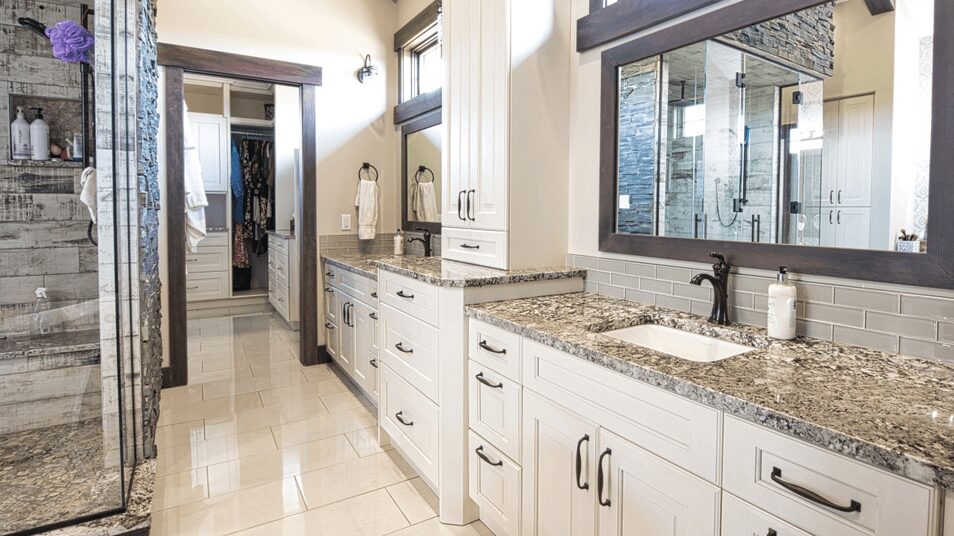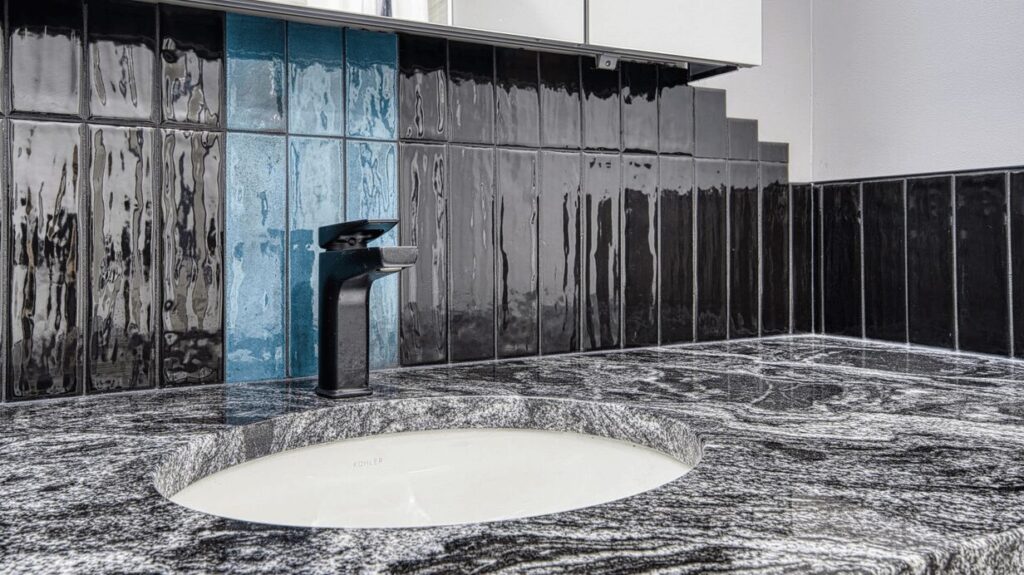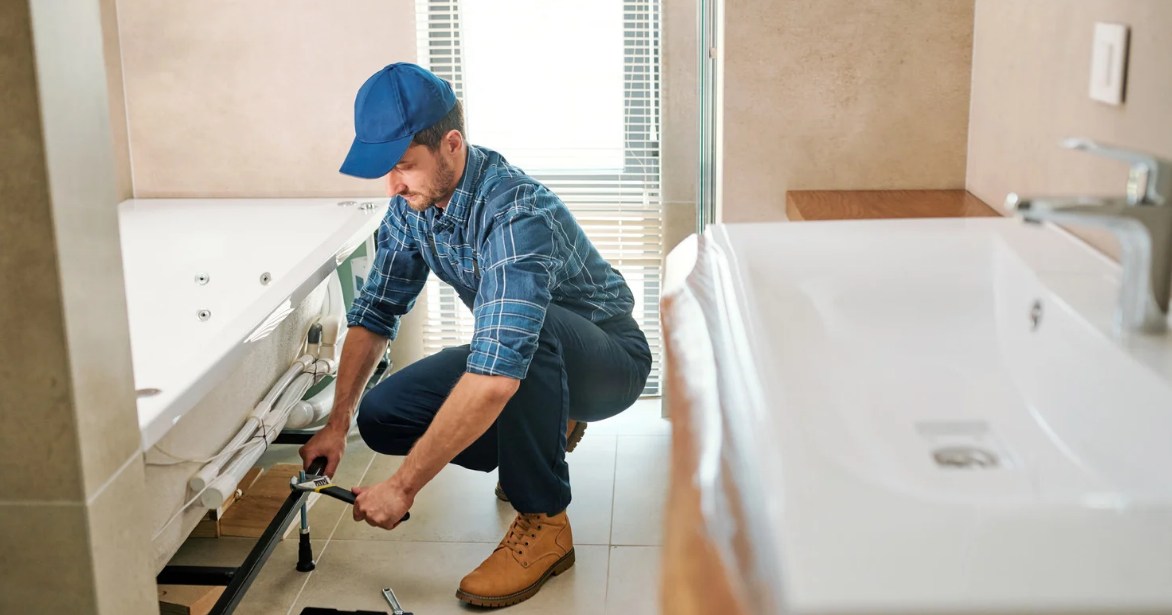Renovating your bathroom is an exciting opportunity to enhance the comfort, functionality, and aesthetic appeal of one of the most important spaces in your home. A well-designed bathroom can also boost your property value, making it a worthwhile investment for the future. However, without careful planning and attention to detail, even small oversights can lead to costly and frustrating mistakes. From budget miscalculations to impractical layouts, these errors can turn your dream renovation into a challenging ordeal.
The goal of this article is to guide you through some of the most common bathroom renovation mistakes and arm you with the knowledge needed to avoid them. By staying informed and prepared, you can enjoy a smoother renovation process and create a space that perfectly suits your needs and style.
Underestimating the Budget

One of the most common mistakes in any renovation project is underestimating the budget. Even with careful planning, unexpected costs can arise, throwing your financial plans off track. For example, during renovations, you may uncover hidden issues such as water damage behind walls, outdated plumbing that needs replacing, or structural problems that weren’t apparent at the start. These surprises can quickly add up and significantly impact your overall expenses.
Additionally, seemingly small upgrades can increase costs more than anticipated. Upgrading fixtures, choosing higher-end materials, or making last-minute design changes can inflate the budget if not accounted for in advance. It’s always best to assume that unexpected expenses will occur and build a financial cushion into your plan.
A good rule of thumb is to add a contingency of 10–20% to your total budget. This buffer allows you to handle surprises without derailing the project or needing to cut essential items later. For instance, if your renovation budget is $20,000, setting aside an extra $2,000–$4,000 can help you stay on track when unplanned issues crop up.
Another key consideration is the quality of materials. Opting for the cheapest options might save money upfront, but it could lead to higher costs in the long run. Low-cost materials often wear out faster, requiring frequent repairs or replacements that can end up costing more over time. Instead, invest in durable, high-quality materials that will last for years to come, ensuring better value and fewer maintenance headaches.
By anticipating unexpected expenses, setting aside a contingency fund, and prioritizing quality materials, you can avoid the pitfalls of underestimating your budget and keep your renovation project on track. Planning can save you time, money, and the stress of scrambling to cover unexpected costs.
Overlooking Proper Ventilation
Proper ventilation in bathrooms is essential to maintaining a healthy and functional space. Bathrooms are naturally humid environments due to the frequent use of showers, baths, and sinks. Without effective ventilation, this excess moisture can create the perfect breeding ground for mould and mildew, which not only pose health risks but can also lead to unpleasant odours and damage to surfaces over time. Prolonged exposure to high humidity can even cause structural issues, such as warped wood, peeling paint, or weakened drywall.
In Canada, building codes require bathrooms to be equipped with functioning exhaust fans that vent moisture and air directly outside, not into attics or other spaces. These fans play a critical role in keeping humidity levels under control and ensuring proper air circulation. However, not all exhaust fans are created equal. To maximize their effectiveness, it’s important to choose a high-quality fan that offers sufficient power for the size of your bathroom. Quiet fans with higher cubic feet per minute (CFM) ratings are ideal, as they provide efficient ventilation without creating excessive noise.
Regular maintenance is also key to ensuring your ventilation system functions properly. Clean the fan grilles periodically to prevent dust buildup, and check that vent ducts are clear of obstructions. Neglecting these steps could reduce the fan’s performance, leaving your bathroom vulnerable to moisture issues.
Poor Layout Planning
A well-thought-out bathroom layout is essential for both functionality and comfort, especially when working with smaller spaces. The flow, spacing, and ergonomics of the room can make a huge difference in how enjoyable and practical the space is to use. Poor layout planning can lead to frustration and inefficiency, turning your bathroom into a source of stress rather than a relaxing haven.
One of the most common mistakes is positioning the toilet as the first thing you see when entering the bathroom. This not only disrupts the aesthetic appeal of the space but can also feel awkward for guests. Another frequent error is installing vanities that feel cramped, either because they are too large for the space or are positioned poorly, leaving little room to move around. Additionally, doors that swing awkwardly or hit fixtures, like toilets or cabinets, can make using the bathroom feel like navigating an obstacle course.
To avoid these issues, it’s important to carefully consider the placement of each element in the bathroom. Think about how the space will be used day-to-day and how to create a natural flow that accommodates all your needs. For instance, ensuring ample clearance around doors, choosing the right size fixtures, and keeping high-use items easily accessible can significantly enhance the functionality of the layout.
When it comes to smaller bathrooms, every inch matters. That’s why engaging a professional designer can be a game-changer. Designers have the expertise to optimize layouts, ensuring the room feels open and balanced, even in tight spaces. They can help you make decisions about fixture placement, storage solutions, and even lighting, creating a cohesive design that maximizes both style and practicality.
In short, putting thought into your bathroom’s layout is an investment in its usability and beauty. Whether you’re renovating or starting from scratch, prioritizing good layout planning will ensure the space meets your needs for years to come.
Ignoring Waterproofing Requirements
Neglecting proper waterproofing in a bathroom renovation can lead to costly and long-term issues. Skimping on quality waterproofing materials or failing to apply the correct techniques can result in water damage, mould growth, and structural deterioration over time. These problems not only compromise the integrity of your bathroom but can also pose health risks and require expensive repairs down the line.
The Difference Between Water-Resistant and Waterproof Products
It’s essential to understand the distinction between water-resistant and waterproof materials. Water-resistant products can withstand some exposure to moisture but are not designed to prevent water penetration entirely. Waterproof products, on the other hand, create a complete barrier against water, making them crucial for areas with constant exposure to moisture. For example, a water-resistant paint may protect a wall in a low-moisture zone, but a waterproof membrane is necessary in high-exposure areas like shower walls or niches.
Key Areas That Require Proper Waterproofing
Certain areas in a bathroom are especially vulnerable to water exposure and require extra attention during the waterproofing process:
- Shower Walls and Niches: These areas are constantly exposed to water and need a robust waterproofing layer to prevent leaks and moisture buildup.
- Under Tile Surfaces: Tiles themselves are not waterproof, so applying a proper membrane beneath the tiles is critical to stop water from seeping through.
- Around Bathtubs: Water often pools and splashes in this area, making it essential to seal the edges properly to avoid leaks.
- Flooring and Subfloor: Proper waterproofing beneath the floor ensures that spills and splashes don’t penetrate and cause damage to the subfloor below.
The Long-Term Impact of Poor Waterproofing
When waterproofing is ignored or done poorly, problems may not be immediately visible but can worsen over time. Moisture that seeps into walls, floors, or substructures can lead to weakening of materials, unpleasant odours, and hazardous mould growth. Investing in proper waterproofing from the start ensures durability, reduces long-term maintenance costs, and protects the health and safety of your home.
By prioritizing waterproofing during your renovation, you can ensure that your bathroom remains functional, durable, and free from water-related issues for years to come.
Choosing the Wrong Materials
When renovating a space, especially in areas like kitchens, bathrooms, or basements, selecting the right materials is crucial to ensure durability and functionality. One of the most common mistakes is choosing materials that are not suited for the environment they’ll be exposed to. For example, using non-water-resistant wood, slippery flooring, or porous tiles can lead to long-term issues like water damage, mould growth, or safety hazards.
Instead, opt for materials designed to withstand moisture and wear. Moisture-resistant drywall is a great choice for humid areas, while porcelain or ceramic tiles are excellent for their durability and resistance to water. Don’t forget to use water-sealed grout to prevent water from seeping in between tiles, which can cause problems over time.
When considering materials, it’s also important to factor in the climate, particularly in regions like Canada, where freezing temperatures and temperature fluctuations are common. For instance, window seals can deteriorate faster in extreme cold, leading to drafts, condensation, and higher energy bills. Similarly, materials need to handle moisture and temperature swings without cracking, warping, or losing their integrity.
To avoid costly mistakes, always assess the specific needs of the space you’re working on and choose materials that are both practical and built to last. Investing in the right materials upfront can save you time, money, and headaches down the line.
DIY Plumbing and Electrical Work: Proceed with Caution
Tackling plumbing or electrical work on your own might seem like a cost-effective solution, but it comes with significant risks. Without the proper permits or professional expertise, you could unknowingly create safety hazards, violate building codes, or even jeopardize your home insurance coverage.
The Hidden Dangers
Plumbing and electrical systems are complex and critical to your home’s functionality. Poorly executed plumbing work can lead to leaks, water damage, or even major flooding, while faulty electrical work increases the risk of short circuits, fires, or electrical shocks. These risks not only endanger your safety but can also result in costly repairs down the line.
Code Violations
When you take on tasks without understanding local building codes, you risk completing work that doesn’t meet legal standards. This can create problems when selling your home since improper or unpermitted work can lower its value or require expensive corrections to meet regulations. Building inspectors may also flag these issues, delaying projects or impacting approvals for future renovations.
Impact on Insurance
Most home insurance policies require that plumbing and electrical work be performed by licensed professionals. If something goes wrong due to unlicensed or uncertified DIY work, your insurance provider may refuse to cover the damages, leaving you responsible for costly repairs.
Why Hire a Licensed Professional?

Hiring licensed tradespeople ensures the job is done safely and meets all regulatory requirements. Professionals have the training, experience, and tools to handle complex systems and ensure everything is up to code. This is particularly important for bathrooms, where plumbing and electrical systems often overlap in tight spaces. A licensed professional can coordinate both aspects seamlessly, preventing potential issues.
The Bottom Line
While DIY projects can be rewarding, plumbing and electrical work are areas where cutting corners can lead to serious consequences. When it comes to these critical systems, investing in licensed, experienced professionals is the smartest choice to protect your home, your safety, and your peace of mind.
Avoid Skipping Storage Solutions
A beautiful bathroom can quickly lose its charm when clutter takes over. One of the most common mistakes people make during bathroom renovations is prioritizing design over functionality, often neglecting proper storage solutions. While sleek aesthetics and luxurious finishes are important, a lack of storage can lead to a disorganized and frustrating space.
To maintain both style and practicality, consider space-efficient storage options that blend seamlessly into your bathroom design. Vanity drawers with built-in organizers are perfect for tucking away toiletries, makeup, and other essentials. Recessed medicine cabinets not only save space but also keep your bathroom counter clutter-free. Floating shelves are another stylish and functional choice, offering additional storage without taking up valuable floor space. For the shower area, built-in niches provide a sleek solution for holding shampoo, conditioner, and other necessities without the need for clunky caddies.
Rushing the Timeline
One of the most common mistakes in renovations is rushing the timeline. While it might be tempting to speed things up and finish the project as quickly as possible, this approach can lead to significant issues down the line. Rushing often results in skipped steps, cutting corners, or even mistakes that could delay the project and increase costs later.
For instance, obtaining permits can take longer than expected, especially depending on your location. In Canada, permit approvals can vary widely by municipality, and any delays here can throw off your entire schedule. Additionally, shipping delays for materials are another factor to consider. Whether it’s custom cabinetry, specialty tiles, or imported fixtures, these items may take weeks—or even months—to arrive, especially with the current global supply chain challenges.
Coordination between trades is another area where rushing can backfire. Electricians, plumbers, carpenters, and other professionals all need to execute their roles in a specific order. If one trade is delayed, it creates a domino effect, causing setbacks for everyone else involved. Improper scheduling or trying to overlap tasks can also lead to errors, forcing rework and wasting valuable time.
To avoid these pitfalls, it’s essential to plan well in advance. Build a realistic timeline that includes all the necessary steps, from design and permits to sourcing materials and scheduling trades. Be sure to add a buffer to account for unexpected delays, because they almost always happen. A well-thought-out timeline not only keeps your project on track but also reduces stress and ensures a higher-quality outcome.
Conclusion
Effective project management is the key to a successful and stress-free experience. By planning, setting realistic timelines, and factoring in potential delays, you can avoid common pitfalls and ensure your project stays on track. Remember, a well-executed plan not only saves time and money but also helps you achieve a higher-quality result. With careful preparation and attention to detail, your efforts are sure to pay off in the long run, leaving you with a finished project you can truly be proud of.
Transform your bathroom with confidence. Reach out to MOD to schedule your consultation today. Our expert team will guide you through every step, creating a bathroom renovation that’s modern, functional, and built to stand the test of time.

